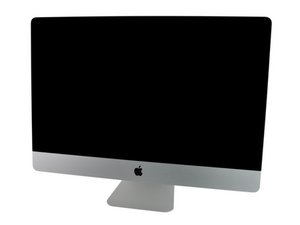Third Hard Drive Connection Cable (Heat Sensor?)
When I removed my original hard drive from my 2009 27" iMac, there was a third connection to the right of the two thermal sensors. It's a small four prong connector. The installation guide doesn't mention it and the new hard drive I got to replace the original one doesn't have an applicable slot to hook this third connection up.
I'm currently stuck with an iMac that's pulled apart and no way to know if this connection point is necessary or how to proceed.
Is this a good question?

 2
2  1
1 
 970
970
3 Comments
What are the last three digits of your serial number?
by oldturkey03
@oldturkey03 H5PJ
by jdooley
iMac "Core i5" 2.66 27-Inch (Late 2009) 2.66 GHz Core i5 (I5-750)
by Dan